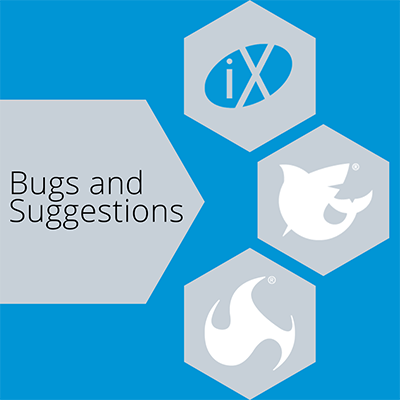republicus
Cadet
- Joined
- Sep 4, 2019
- Messages
- 1
I have researched this topic as broadly as possible so I could learn how to make infiniband behave in FreeNAS as well as in hoping not to bother anyone else for support.
Unfortunately my research has left me more unsure than when I began. I can't even be sure my efforts will be fruitful if realized in my proceeding request.
I currently have ipoib working out of the box using the included mlx4 and ipoib modules for my 40Gbe Infiniband network card. I wish, though, to use ISCSI (iSER) and NFS over RDMA.
It appears iSER can be compiled into the kernel of FreeBSD (https://man.openbsd.org/FreeBSD-11.1/iser.4) or loaded as a module.
Since iSER appears not to be compiled into the FreeNAS kernel or as a module I wish to try to build FreeNAS with it, or with the OFED stack (https://wiki.freebsd.org/InfiniBand) which should also include iSER/RDMA support.
I found instructions to build FreeNAS (https://github.com/freenas/build) which does not exactly align with the instructions for compiling the kernel with the earlier mentioned support.
I'm new to building FreeBSD/FreeNAS, so I suppose I am requesting best practices for building FreeNAS with iSER/OFED.
Might I first build FreeBSD with the compiled kernel modifications then proceed to build FreeNAS as detailed above?
Can the same steps be made to include additional packages (which may be moot as they may be included when OFED is compiled) such as ibstat and other infiniband diags/tools?
In the end, I still am not sure either or both approaches will make iSER target support succeed. It appears some work has been made, first, to introduce iSER initiator support. But that was read in old mailing lists and not specifically mentioning OFED since Mellanox engineers started contributing. I am willing to experiment and report back for any others interested. Until then, I humbly ask for any guidance anyone might have that may lead me there.
Thanks for reading.
Unfortunately my research has left me more unsure than when I began. I can't even be sure my efforts will be fruitful if realized in my proceeding request.
I currently have ipoib working out of the box using the included mlx4 and ipoib modules for my 40Gbe Infiniband network card. I wish, though, to use ISCSI (iSER) and NFS over RDMA.
It appears iSER can be compiled into the kernel of FreeBSD (https://man.openbsd.org/FreeBSD-11.1/iser.4) or loaded as a module.
Since iSER appears not to be compiled into the FreeNAS kernel or as a module I wish to try to build FreeNAS with it, or with the OFED stack (https://wiki.freebsd.org/InfiniBand) which should also include iSER/RDMA support.
I found instructions to build FreeNAS (https://github.com/freenas/build) which does not exactly align with the instructions for compiling the kernel with the earlier mentioned support.
I'm new to building FreeBSD/FreeNAS, so I suppose I am requesting best practices for building FreeNAS with iSER/OFED.
Might I first build FreeBSD with the compiled kernel modifications then proceed to build FreeNAS as detailed above?
Can the same steps be made to include additional packages (which may be moot as they may be included when OFED is compiled) such as ibstat and other infiniband diags/tools?
In the end, I still am not sure either or both approaches will make iSER target support succeed. It appears some work has been made, first, to introduce iSER initiator support. But that was read in old mailing lists and not specifically mentioning OFED since Mellanox engineers started contributing. I am willing to experiment and report back for any others interested. Until then, I humbly ask for any guidance anyone might have that may lead me there.
Thanks for reading.

